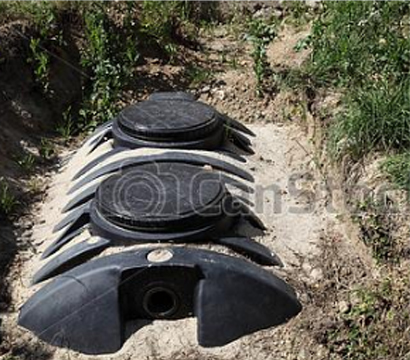ONSITE SEWAGE DISPOSAL FEASIBILITY
Did you know that in Virginia approximately one third of all homes are served by onsite sewage disposal systems:
The Environmental Protection Agency had deemed pollution from old, failing, and outdated systems to be one of the largest sources of groundwater contamination in the US. In response, states have strengthened their onsite sewage regulations in order to protect public health.
Many of these changes have resulted in the requirement for alternative, or advanced onsite systems to be used in areas where conventional septic systems were once allowed.
In addition, states now require more stringent controls on who evaluates sites and designs these systems. Virginia’s Authorized Onsite Soil Evaluator (AOSE) program was introduced to facilitate proper design on onsite wastewater systems.
An AOSE is an environmental professional who had experience and training evaluating sites for onsite sewage disposal. AOSE’s are also required to complete Virginia Department of Health testing to ensure that they are competent to perform soil evaluations and design onsite systems.
A soil evaluation, commonly and inaccurately called a “Perc Test,” is a systematic evaluation of the critical items related to ensure that an onsite sewage disposal system complies with the Virginia Department of Health 2000 Sewage Handling and Disposal Regulations.

The critical items determined by a soil evaluation are as follows:
• The depth of seasonal water table. A standoff or separation distance from the bottom of the onsite system to a seasonal water table is paramount in protecting groundwater. The standoff allows the natural organisms in the unsaturated soil to quickly out compete and kill off the harmful pathogens found in the sewage. This standoff varies from system to system, but generally decreases as the level of treatment provided by the system increases.
• Texture of soil. The heavier the texture of the soil, the larger the absorption field needs to be for any given flow. Example – a 4 bedroom house whose system is located in heavy clay will be larger than a 4 bedroom system located in a very sandy soil.
• Sanitary survey is critical to determine if the horizontal separation distances required in Virginia’s 2000 Sewage Handling and Disposal Regulations and 1992 Private Well Regulations can be maintained. Both sets of regulations contain the required horizontal setbacks from onsite systems and other sources of contamination (i.e. USTs) to all types of wells. In layman terms, you do not want to put a septic system too close to a well or vice versa.
By performing a soil evaluation and associates sanitary survey, an AOSE can determine any particular site’s feasibility for an onsite sewage disposal system, and design a system that will best serve the client’s needs today and in the future.
For further information, please call Quinn Zimmerman, AOSE #238, at 757-623-0777 or email [email protected]. Mr. Zimmerman has extensive experience performing soil evaluations to determine suitability for onsite sewage disposal, including Conventional, Alternative, and Soil Drainage Management systems.
